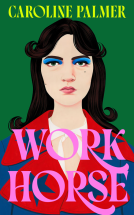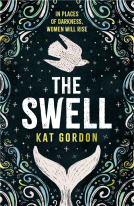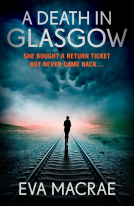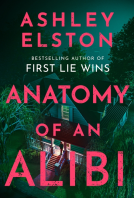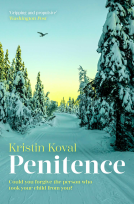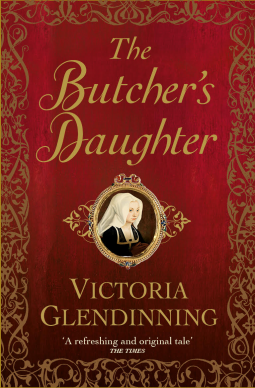
The Butcher's Daughter
by Victoria Glendinning
This title was previously available on NetGalley and is now archived.
Send NetGalley books directly to your Kindle or Kindle app
1
To read on a Kindle or Kindle app, please add kindle@netgalley.com as an approved email address to receive files in your Amazon account. Click here for step-by-step instructions.
2
Also find your Kindle email address within your Amazon account, and enter it here.
Pub Date 13 Jun 2019 | Archive Date 17 Jul 2019
Talking about this book? Use #TheButchersDaughter #NetGalley. More hashtag tips!
Description
The Butcher's Daughter is a richly atmospheric story of a young woman's struggle to define herself in a world of uncertainty, intrigue and danger in a time of great upheaval during the Tudor era.
It is 1535 and Agnes Peppin, daughter of a West-country butcher, has been banished, leaving her family home in disgrace to live out the rest of her life cloistered behind the walls of Shaftesbury Abbey. While Agnes grapples with the complex rules and hierarchies of the sisterhood, King Henry VIII has proclaimed himself Head of the Church of England. Religious houses are being formally subjugated, monasteries dissolved, and the great Abbey is no exception to the purge.
Cast out with her sisters, Agnes is at last free to be the master of her own fate. But freedom comes at a price as she descends into a world she knows little about, using her wits and testing her moral convictions against her need to survive - by any means necessary...
Advance Praise
‘Glendinning writes with a vivid immediacy about a fascinating, dark moment in our island story… a refreshing and original tale [about] the underside of Henry’s religious Reformation.’ The Times
'Marvellous.... heart-breaking and unforgettable... a by times humorous, by times tragic but always compelling picaresque tale.' The Irish Times
‘An absolute pleasure… assured, quietly gripping, surprising and educative, with a terrific central character, it pins down the precarious nature of life in 16th-century England.’ Daily Mail
‘A touching, vivid and sometimes deeply shocking depiction of the lives of ordinary people whose world was shattered by Henry VIII’s policy to dissolve England’s monasteries. A must for anyone interested in the Tudor period.' Elizabeth Fremantle
‘A powerful and very immediate picture of another age. It is full of violence and loss, and yet it is also a testament to survival, courage, pity, and the eternal beauty to be found in small things’ Anne Perry
"'The enchanting, unputdownable fictional biography of a girl thrown out to make her own way in the world with nothing and no one to help her.’ Hilary Spurling
Available Editions
| EDITION | Ebook |
| ISBN | 9780715652930 |
| PRICE | US$9.99 (USD) |
Links
Average rating from 10 members
Featured Reviews
 Cristie U, Book Trade Professional
Cristie U, Book Trade Professional
This was a great piece of historical fiction. I found the characters to be well developed and interesting. The author obviously knows a lot about the time period because it was historically accurate.
Set in Tudor England, this book follows the dissolution of the monasteries through the eyes of one of the young nuns, which gives it quite an unusual perspective. I hadn't really thought too much what would happen to all the religious men and women suddenly dispossessed and made homeless. Some could not return to family, many could not cope without the order of the Rule to guide their lives. This story sets the scene very credibly, and we follow how various characters cope.
However, the key character, Agnes Peppin, is much more rounded and we follow her story from before she goes to the convent, and what happens to her afterwards. It almost reads as fact, not fiction, as she travels to London and becomes involved with Thomas Wyatt, an historical figure.
I found the book to be historically accurate and written in an entertaining and endearing style. All the fictional elements seemed to be very credible and wove well into the story. I enjoyed it very much.
Thank you to NetGalley and Duckworth Publishing for allowing me access to the ARC in exchange for an honest review.
 Helen S, Reviewer
Helen S, Reviewer
The Butcher’s Daughter is a novel set in Tudor England during and after the Dissolution of the Monasteries. It’s a time period and subject that interests me, so I had high hopes for this book, my first by Victoria Glendinning.
It’s 1535 and Agnes Peppin is the ‘butcher’s daughter’ of the title – a young woman from Bruton in Somerset who, after giving birth to an illegitimate child, has been sent to live with the nuns at Shaftesbury Abbey as a novice. Agnes can read and write, having been taught by the canons at her local church, and these skills make her useful to the abbess, Elizabeth Zouche. Before she has time to take her vows and become a nun herself, however, Shaftesbury Abbey, like other great religious houses across the country, becomes a target of Henry VIII and Thomas Cromwell’s campaign to dissolve the abbeys and monasteries, seizing their assets for the crown and then demolishing the buildings.
The Butcher’s Daughter is narrated by Agnes herself in the form of a memoir as she first describes her life at the abbey and then tells us what happens afterwards as she and her fellow nuns and novices find themselves facing uncertain futures. It’s a slow-paced novel and definitely one which is driven more by character than by plot, but I still found it quite gripping because Agnes pulled me so thoroughly into her world. The chapters set within the abbey are informative and detailed; as a novice, Agnes has a lot to learn, from how to dress herself correctly to studying the Lives of the Saints, as well as getting to know the other women with whom she will be living within the confines of the cloister.
The second half of the book was even more interesting. While the inhabitants of Shaftesbury Abbey have been watching the downfall of other smaller, less profitable houses, telling themselves that ‘in our case, of course, surrender is unthinkable and indeed unthought of’, it eventually becomes evident that they will not be spared and must prepare to suffer the same fate. We see the final days of the abbey through our heroine’s eyes, before following her through a series of adventures as she rejoins the secular world and attempts to find a place for herself in society again. Although Agnes has spent a relatively short time at Shaftesbury, there are others who have known no other sort of life and who find it much more difficult to cope with the changes enforced on them.
Although Agnes is a fictional character and her personal story is invented, Shaftesbury Abbey was real and characters such as Elizabeth Zouche really existed too. Towards the end of the novel, Agnes crosses paths with Sir Thomas Wyatt (son of the poet of the same name), bringing more real historical events and political intrigue into the story, but the focus is always on Agnes herself and the things she experiences during this traumatic and eventful period of religious history. And yet, despite the upheaval Agnes goes through and the challenges she faces, there is still a sense of optimism…a comforting knowledge that, whatever happens, life must go on, “Beans will sprout. Children will be born. There will be butterflies”.
 Jo-anne A, Reviewer
Jo-anne A, Reviewer
Agnes Peppin is the daughter of a West Country butcher, her mother is related to a noble family. When Agnes becomes pregnant she gives birth and then, to reduce the embarrassment, she is placed in the Abbey of Shaftesbury to become a nun. Whilst Agnes adjusted to life in the cloister the outside world is changing and King Henry is ensuring that there are fewer monastic dwellings. Thrust into the world Agnes and her fellow sisters have to adapt to survive.
This is a very slow novel that builds gradually. The characters are beautifully drawn and Agnes herself is complex with surprise motivations at times. This is a completely different perspective on the time when Henry VIII made himself head of the Church and what became known as the Dissolution took place. Here the impact on both the people in the religious houses and also the communities around are explored. It is a really wonderful book that deserves to be savoured.
Readers who liked this book also liked:
Michael Livingston
General Fiction (Adult), Historical Fiction, Sci Fi & Fantasy
Carmella Lowkis
General Fiction (Adult), Historical Fiction, Literary Fiction


